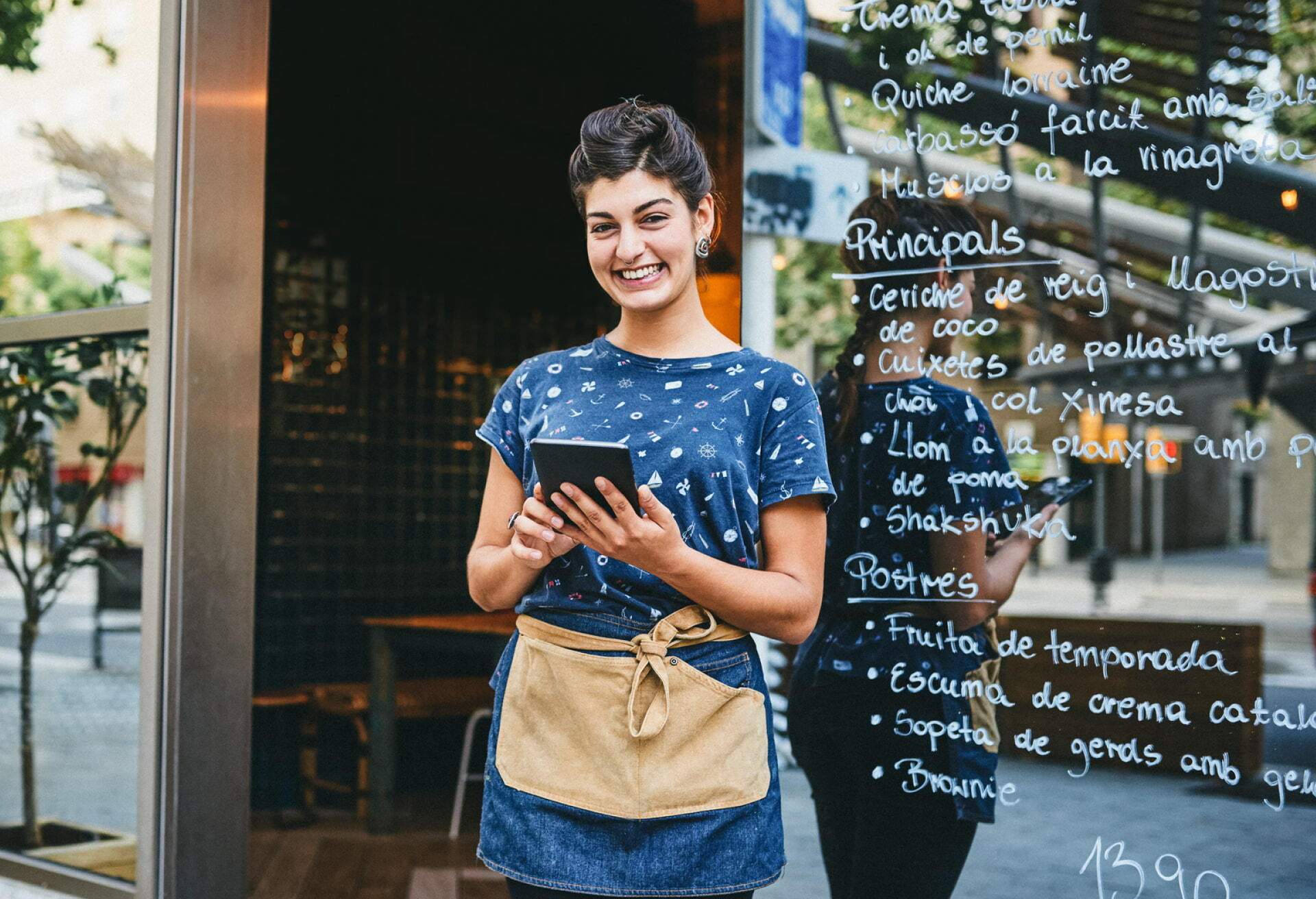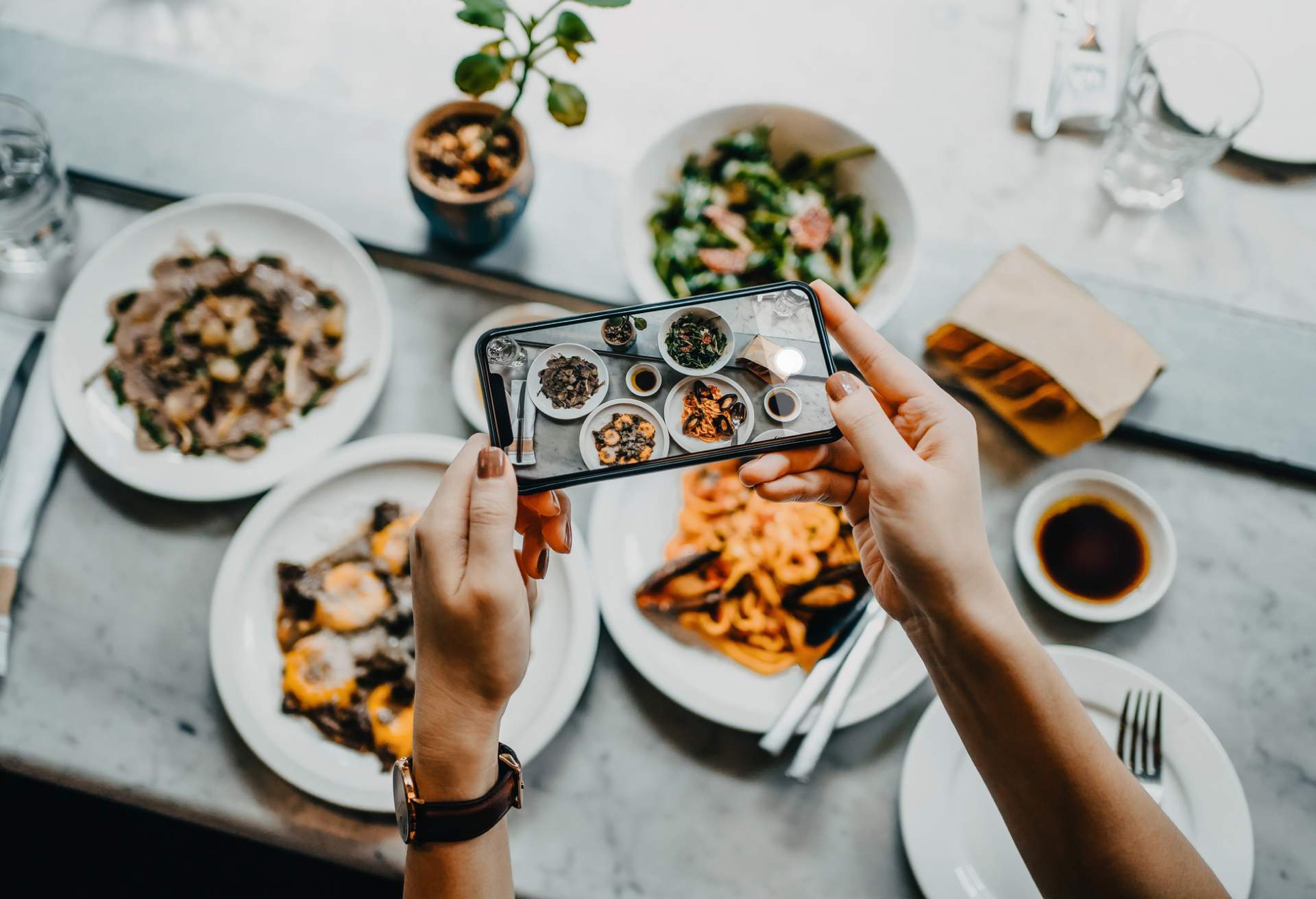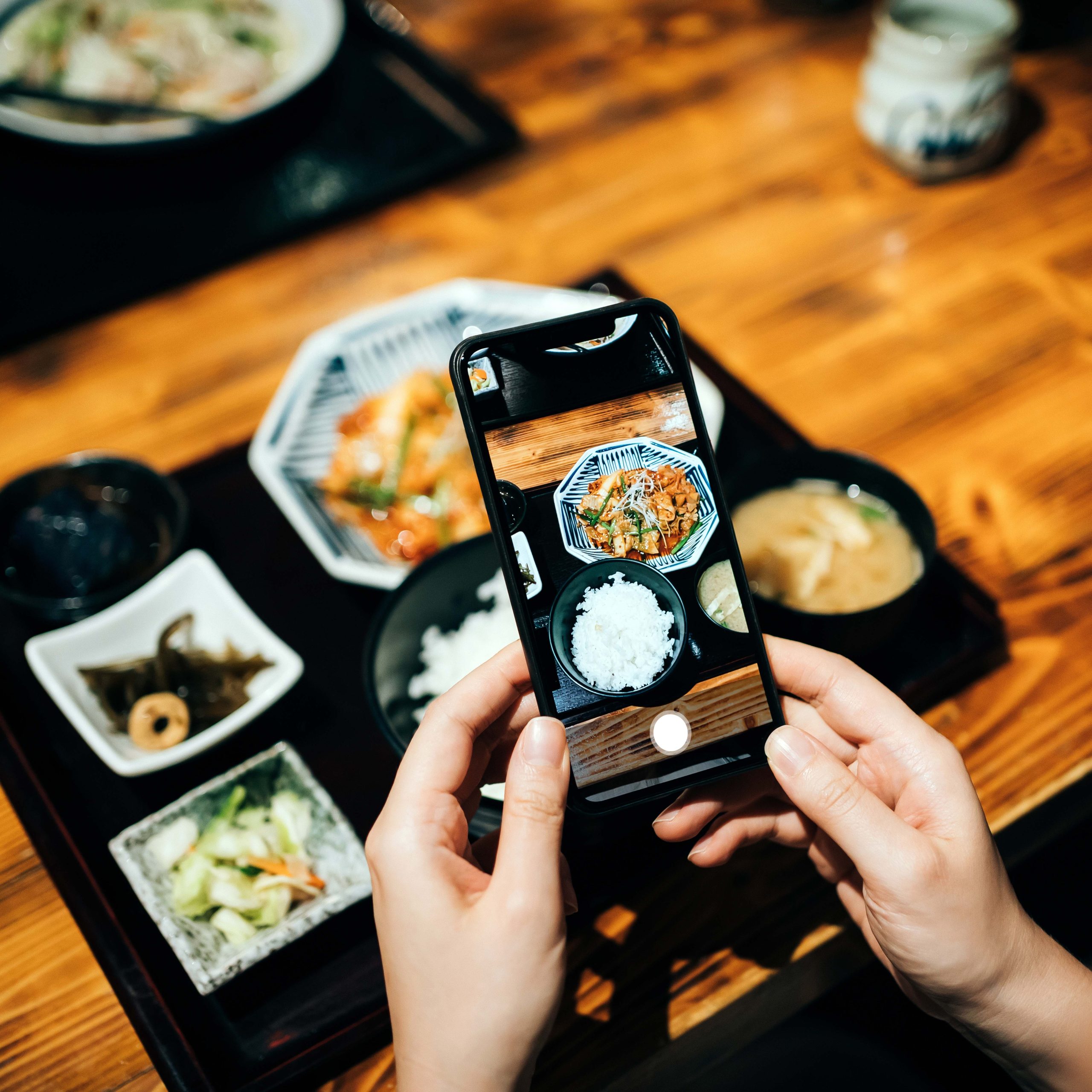Restaurant social media strategy refers to having a plan to connect with your guests where they spend their time: online. According to a recent OpenTable Survey, 58% of diners say they have picked a restaurant after seeing content on their social media account
Beyond the enormous reach of these channels, being active on them can measurably increase revenue. But how can you make social media work for your restaurant? We’re here to find out with these handy tips for how to market a restaurant on social media.
Here are 10 doable tips for how to market a restaurant on social media:
Quick links
Make it easier for customers to book through social media
How to choose the best social media platform for your restaurant
Make it easy to book a reservation on social
Use the new features
Add your restaurant’s location information
Focus on photos (and videos)
Update decor with social in mind
Keep restaurant content fresh
Keep the ‘social’ in social media
Give followers a VIP pass
Dig into the data
From social media to socialising at your spot
Convenience is key
An effective restaurant social media strategy is a must if you’re a restaurant. It can give guests a one-click way to book tables without going anywhere else online, and such a strategy optimises convenience – a surprisingly significant factor when it comes to decision making.
Indeed, 9 in 10 consumers are influenced in their decisions by convenience, according to the National Retail Federation. It’s in your best interest to remove even the smallest task that stands between a diner and the ability to reserve a table.
Adding a “book now” button to your social media profiles and posts – both organic and paid – is one way to eliminate friction between a guest’s sometimes fleeting impulse to visit a restaurant and them reserving a table.
How to choose the best social media platform for your restaurant
There are many social media platforms available to connect with an audience and express your restaurant’s brand, but you don’t need to be everywhere at once. Instead, choose one or two platforms to focus attention on and build a following there. It’s better to specialise in just a couple of channels rather than take a scattergun approach and be on every social media platform without having much to say.
Gravitate toward a platform you already enjoy using, as you’ll be familiar with how it works. Another way to figure it out is to ask your regulars which ones they use most. Other factors include size (Meta, which consists of both Facebook and Instagram, is still the largest social media platform in the world in 2023) and demographics (Gen Z is on TikTok).
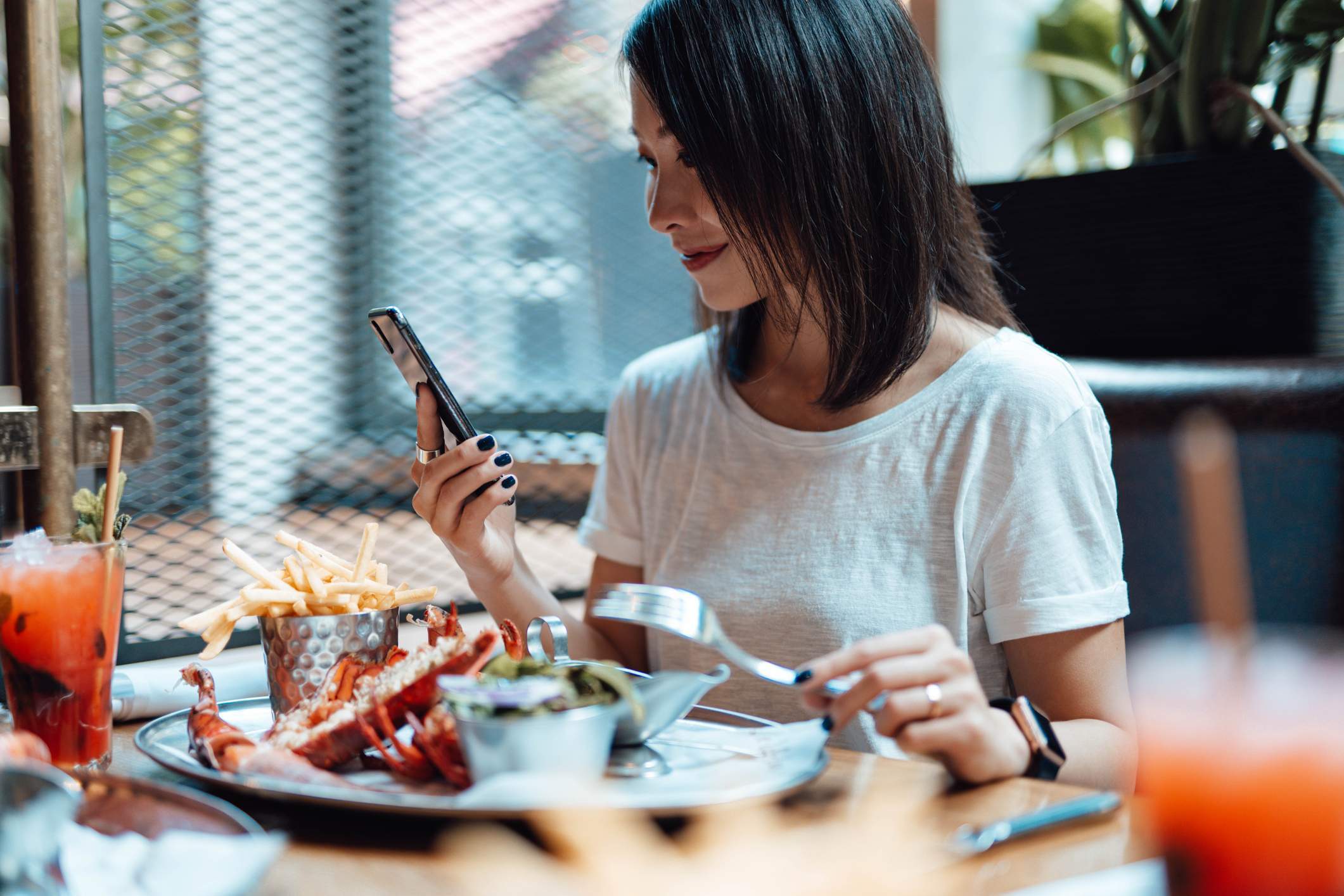
Booking reservations through social media
Social media never stands still, and there’s always something new to experiment with. It can be fun to try out these features, and using them can increase visibility on your chosen platforms.
The presence or absence of this little button can play a role in how social media affects restaurants. The aim is to give diners every possible opportunity to book a table with your restaurant.
Leverage new social media formats
Social media never stands still, and there’s always something new to experiment with. It can be fun to try out these features, and it’s likely using them will increase your visibility on the platforms, too.
Get the most out of Instagram’s stories feature and share posts that will vanish within 24 hours, offering a unique way to keep active on the platform. You can use stories to:
-
- Gain feedback from your followers by asking questions such as their preference on menu items for a special of the day
- Take advantage of the quick and easy polling feature to conduct surveys, and keep your customers hooked with 24-hour offers such as a free menu item or a 20% discount on a glass of wine
- Snap an exciting picture and encourage your audience to avail of the offer before the clock ticks away, creating a buzz among your potential customers.
Experiment with Instagram’s reels & TikTok videos features to post short videos. Make sure to select a trending music background to amplify your visibility, and remember to use a vertical format to film them. (Don’t turn your phone sideways.) Videos on Reels & TikTok are good for:
-
- Introducing your restaurant staff
- Offering a sneak peak of what goes on behind-the-scenes in the kitchen
- Highlighting special ingredients in your menu
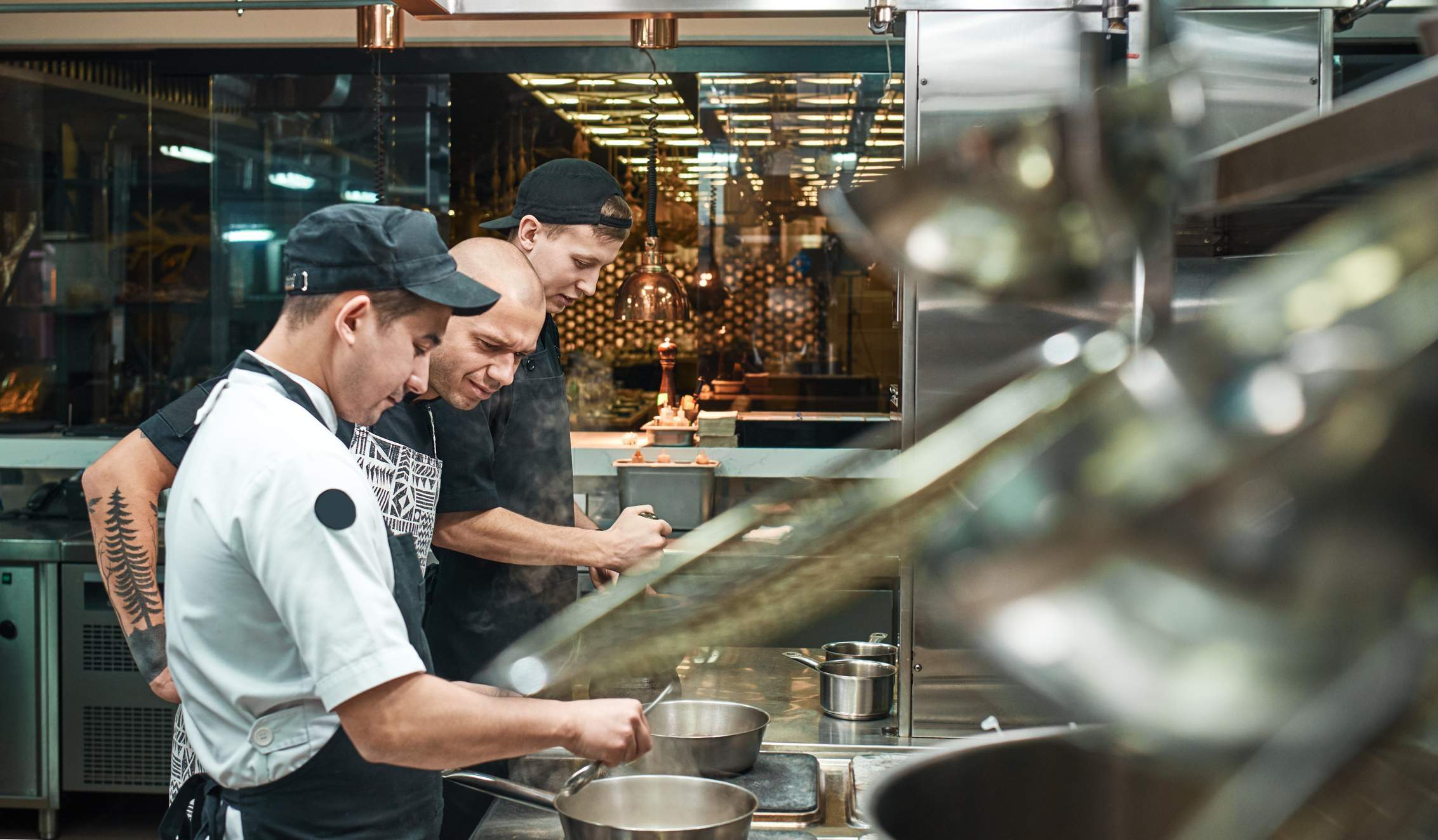
Add location information
Restaurants are, by nature, highly local. Unless someone’s on holiday or visiting somewhere, it’s unlikely diners will look for options more than a few miles away. Therefore, it’s important to add your address and geotag your posts. Doing so helps both locals and visitors find you when they’re looking for a spot nearby to grab a bite or a drink.
Focus on photos (and videos)
Almost a third of millennials won’t go to a restaurant if its Instagram feed isn’t up to scratch. Most social media is highly visual, so it’s worth spending some time making your photos and videos the best they can be. You don’t need a special camera or tons of expertise to start improving either.
Even an iPhone can take attention-grabbing photos and videos when you find a spot with great natural light to take them. For still photos, taking a few shots will let you pick the best option. And remember, images don’t need to be perfect to be great. A lack of polish (or video editing) can convey authenticity to your audience.
Update decor with social in mind
Marketing a restaurant with social media involves making the space camera-ready. One of the best ways to grow your brand is by getting guests to share posts about the restaurant. You can turn this into a form of user-generated content (UGC), using guest pics as a form of marketing.
UGC adds authenticity and helps build a stronger connection with your followers. Get your spot social media ready by providing Instagramable settings with items like neon signs, wallpaper, and statement artworks. They all lend themselves to selfies and sharing.
Keep content fresh
Share new content regularly to help followers get to know the brand. Keeping up a steady stream of new posts can be challenging, but thinking in terms of different buckets of content can help. Consider giving days of the week a theme.
For example, highlight a team member on Mondays, share food photos on Tuesdays and give updates about the restaurant on Fridays. Other broad categories might include:
- Sharing tips or recipes from the kitchen
- Highlighting favourite suppliers
- Going behind the scenes in the kitchen
- Sharing any awards or media mentions you’ve received lately
Mix it up to keep it interesting for you and your followers.
Keep the ‘social’ in social media
It can be tempting to figure out what you want to post, put it out there, and walk away. But this is just part of what it means to build your brand on social media. It’s not supposed to be a one-way street.
The magic of social media is in its engagement. It presents the opportunity to be in conversation with hundreds or even thousands of potential guests. Kickstart the back and forth by running contests (be sure to review the social media platform’s rules on this) and reposting things that people post about you. When followers leave questions and comments, respond to them as much as possible.
Treat members of your online community with the same hospitality you offer to guests in your restaurants, and you’re more likely to see them in real life.
Give followers a VIP pass
There’s nothing restaurant lovers relish more than a peek into their favourite kitchen. Again, take them behind the scenes with social media tools like Snapchat, Instagram Stories, TikTok, or Facebook reels.
Share short clips of chefs cooking or talking about a new dish. Let managers share tips about getting the best tables or give previews of upcoming events. It’s all about making people feel like they’re getting exclusive access to the restaurant’s inner sanctum. In turn, this helps build a connection with your audience and increases the chances of them booking a table to see it all in real life.
Dig into the data
When you make it easy for people to reserve a table on social media platforms with a ‘book now’ button, you’ll have a new stream of data and insights about your guests and potential guests to learn what’s working. Tracking and analytics will let you understand how well your digital marketing is working.
You’ll find out what kind of content makes the most people use that “book now” button to reserve a table. And if you use paid advertising, you’ll get a strong sense of how to get the most out of your ad spend.
From social media to socialising at your spot
It’s not necessary to master every social media platform and feature out there to connect with an audience and bring them in the door. Keep it simple, have fun, stay authentic and most of all, make it easy for guests to follow their social-media induced cravings all the way to your restaurant.

